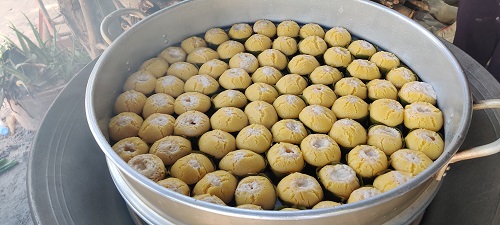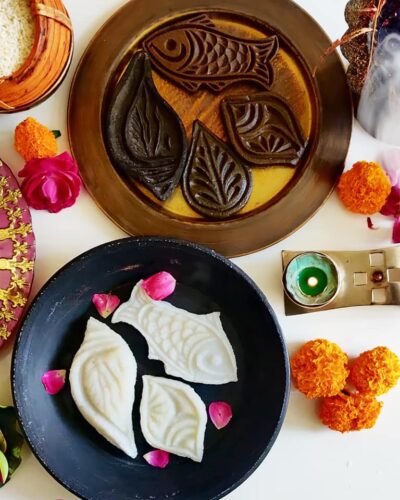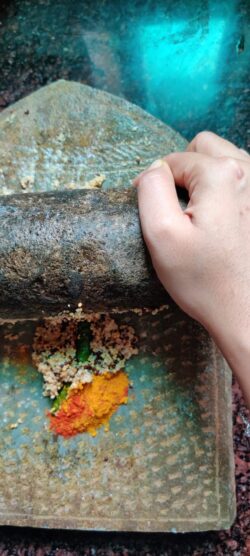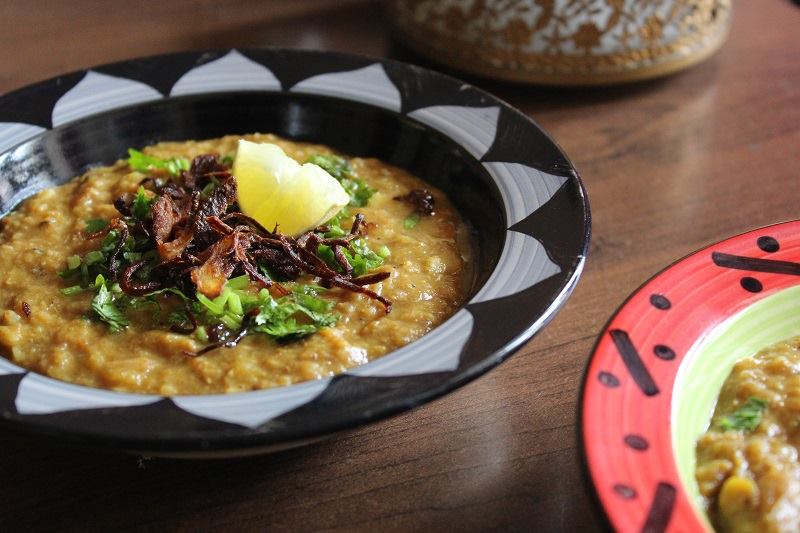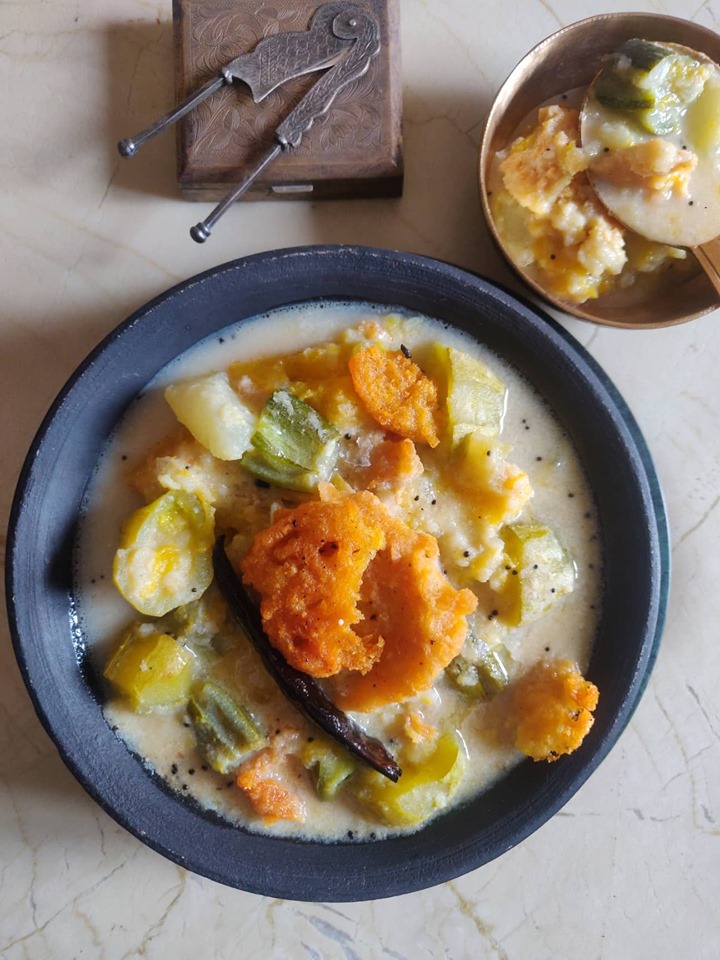
Enough has been written and said about the Bengali shukto. So why more? I agree, I might as well not add few more words to a cup that is already overfloweth! But how about a til shukto or shukto made with a paste of white sesame seeds? Might be it deserves a word or two.
The til shukto is an interesting variation of the Bengali medley of vegetables (and fish) but always made without any element of bitter. The interesting bit about the dish is that it used to be made only on birthdays as an auspicious symbol of longevity and prosperity. The best reason that I can think of behind such a belief is the symbolism attached to the defining ingredient itself – til or sesame.
Sesame seed is considered drops of perspiration of Lord Vishnu that fell on the ground and were blessed by Yama, the God of death and also the enlightenment. The seeds, hence, are considered a sign of immortality, offered both for longevity and to mark cyclic continuity of life after death. The sesame seeds are believed to have the capability to absorb negative energies and ease the way for spiritual offering. Vedic literature such as Grihya sutra, Jaiminiya Grhya sutra, and Garuda Purana, and Buddhist texts such as Boudayana Dharmasutra refer to the use of sesame seeds. Sesame is also mentioned in the 2000 year old Tamil Sangam literature.
One reason why the sesame is considered so significant to life and afterlife, is because it is one of the earliest crops in the Indian sub-continent. Excavations at the Indus civilization site of Harappa have yielded charred sesame from a stratum attributed to 3050-3500 B.C. It is also perhaps the first oil seed, considered the word “taela” for oil came from the word “til” for sesame.
Religious, mythological or economic significance aside, a til shukto is a nice variation to the usual recipe, with a nutty, sweet creaminess that the til paste lends to the gravy. Totally worth an addition to the menu to bless someone with longevity on their birthdays.
Til Shukto
Vegetables: Brinjal: 1, medium
Green plantain: 1
Sweet potato: 1 medium
Drumsticks: 2-3, tender ones
Long bean: 3-4
White radish: 1 medium
Pointed gourd: 3-4
Ridge gourd: 2, medium
Bori: 8-10 or chapor* (instructions given below): 4, broken into smaller pieces
Ginger Paste: 2 tsp
White sesame seed paste 2 tbsp
Mustard Oil: 4-5 tsp
Cow’s ghee: 2 tbsp + 1 tbsp
Dry red chilli: 1
Black pepper powder: ¼ tsp
Methi or fenugreek seeds: 1/4 tsp
Mustard seeds: 1/2 tsp
Salt and Sugar: to taste
Plain flour or rice flour: 1 tsp
1. Wash and cut all vegetables into one inch pieces.
2. If using bori, heat mustard oil in a wok (not cast iron) and fry the bori over medium low heat till golden brown. Set the bori aside. If using chapor, follow the instructions given below.
3. In the same oil lightly fry the brinjal with little salt and set it aside.
4. In the same wok heat 2 tbsp ghee, add the methi seeds, fry till fragrant, remove with a slotted spoon and discard.
5. Add the dry red chilli, bay leaf and mustard seeds. When the mustard starts to splutter, add the sweet potatoes, radish, and long beans. Sprinkle some salt and saute the vegetables for few minutes. Reduce the flame, cover and let the vegetables cook till quarter done. Keep stirring from time to time to prevent sticking to the bottom.
6. Add the remaining vegetables, saute and cover and cook till half done. Add the brinjal and half of the ginger paste. Stir well, cover and cook till vegetables are almost cooked through. Add a few spoons of water if required to prevent from burning.
7. Add 2 cups of water to the wok, increase the heat to medium high and bring to a boil.
8. Mix the sesame paste with 1/2 cup of water and the flour, stir well to avoid any lumps. Add to the vegetables, increase the heat to medium high and bring to a boil. Let it simmer for few minutes.
9. Adjust salt and sugar, add the remaining ghee, black pepper powder and the remaining ginger paste. Bring to a rolling boil and take off the heat.
10. Serve with steamed rice.
Chapor
Chana dal (split Bengal gram) or Matar dal (split peas): 1 cup, Green chillies: 1, Mustard oil for shallow frying, Salt to taste
1. Wash and soak the chana dal overnight.
2. Drain and grind coarsely with salt and green chillies. Whip the batter till light and airy.
3. Heat a griddle or pan and grease it with oil.
4. Make patties that are 2-3” in diameter and 1/2 centimetre thick, and carefully put them on the pan.
5. Cook over medium heat till the one side turns brown with crisp edges.
6. Flip it over and cook while pressing them lightly with the help of spatula. Drizzle oil the sides to make the edges nice and crisp.
7. Keep aside until needed.
*The original recipe calls for chapor.



